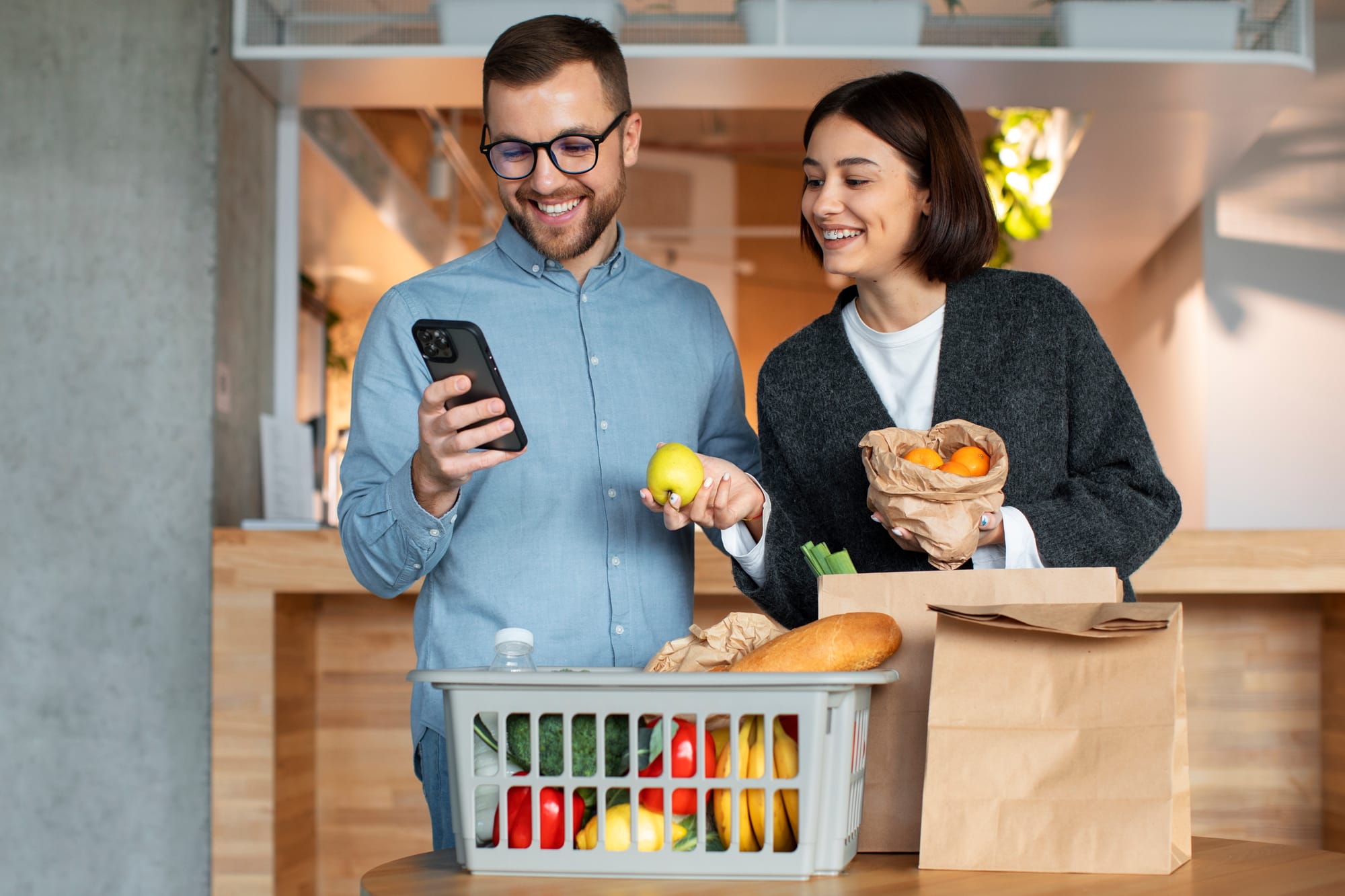On this page
Grocery and hypermarket space has always been highly competitive. With online retailers offering convenience, discounts, and more variety at the customers’ doorstep, the fight for the same wallet share has gotten fierce.
Some grocery chains fight competition by offering deep discounts. Still, sooner or later, grocers need to deploy a strong loyalty program with personalized rewards to bring shoppers back to stores and help them stand out in this hyper-competitive space.
Grocery loyalty programs have become crucial for attracting and retaining customers.
No wonder 85% of consumers feel loyalty programs make them more likely to continue shopping with brands.
With consumers expecting personalized rewards, digital convenience, and added value beyond price cuts, supermarkets must continuously evolve their loyalty programs to stay relevant.
This blog covers top grocery store loyalty programs and must-have features for developing a rewards program.
What is a Grocery Store Loyalty Program?
A grocery store loyalty program is a rewards-based system that encourages repeat purchases by offering discounts, exclusive deals, or redeemable points to supermarket chains or stores.
Grocery loyalty program rewards focus on standard discount coupons and more experiential benefits, such as free products, lucky draws, complimentary delivery, service coupons, and exclusive branded items. Such rewards and benefits provide added convenience and value to customers.
Top 6 Grocery Store Loyalty Programs
Several grocery store loyalty programs have distinguished themselves by offering unique benefits and fostering strong customer loyalty.
These programs exemplify how grocery retailers tailor their loyalty offerings to meet diverse customer needs, from bulk purchasing and exclusive discounts to personalized rewards and convenient delivery options.
Here are the top six grocery loyalty programs:
Costco Membership
The Costco Membership program has over 133 million members and operates on a membership-only warehouse model. Costco’s grocery store loyalty program offers significant savings on bulk purchases.
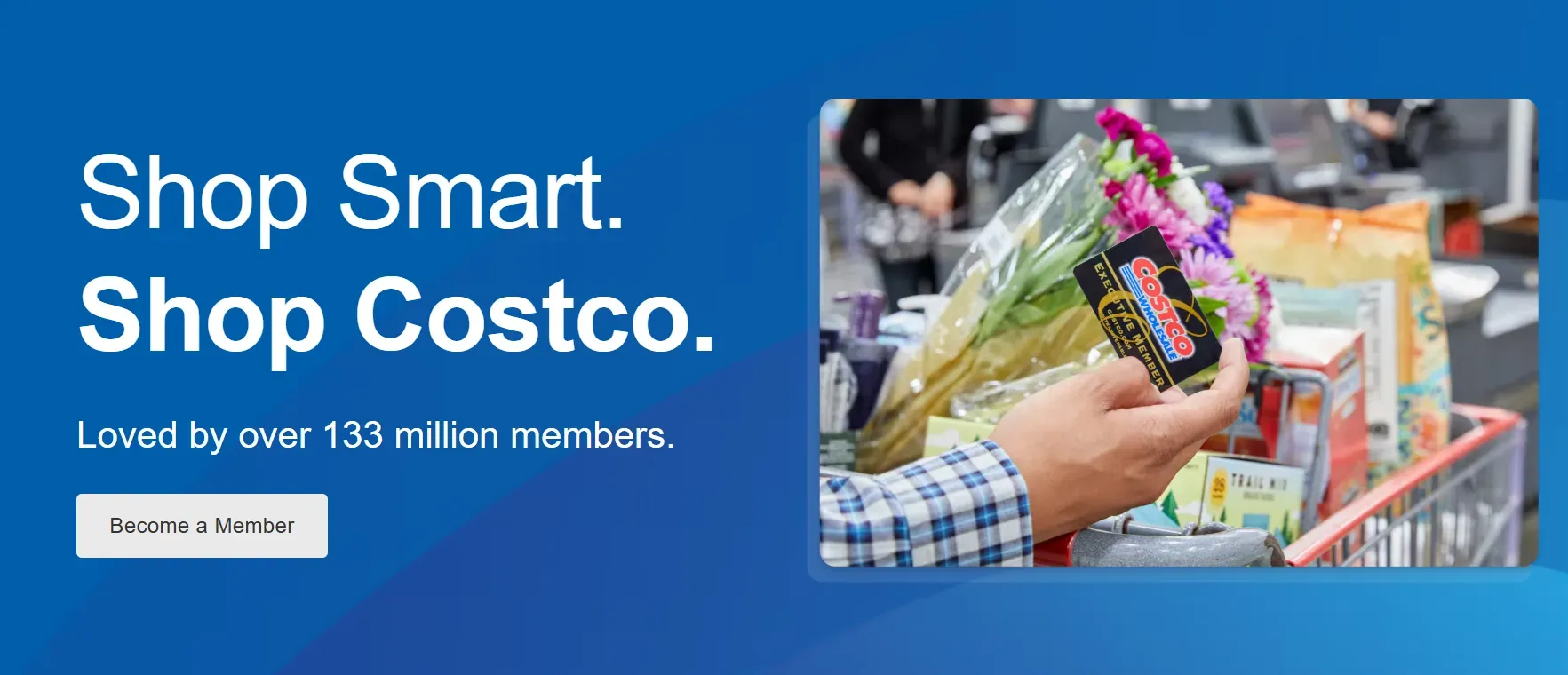
Costco Members choose from two types of memberships, each with different rewards, perks, and offers. The top-tier Executive Membership, priced at $135 annually, offers incentives such as an annual 2% reward.
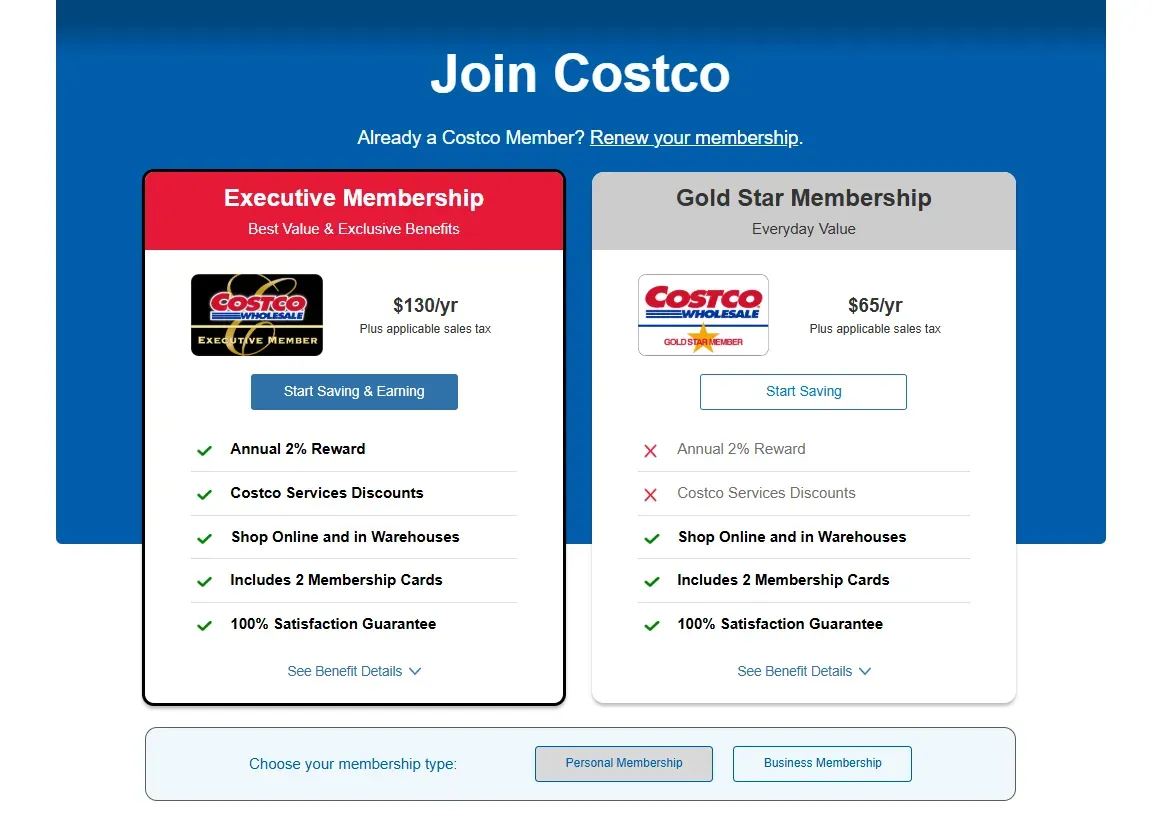
Costco offers personalized benefits for different categories, such as electronics, pharmacy, optical, etc., and offers for all family sizes.
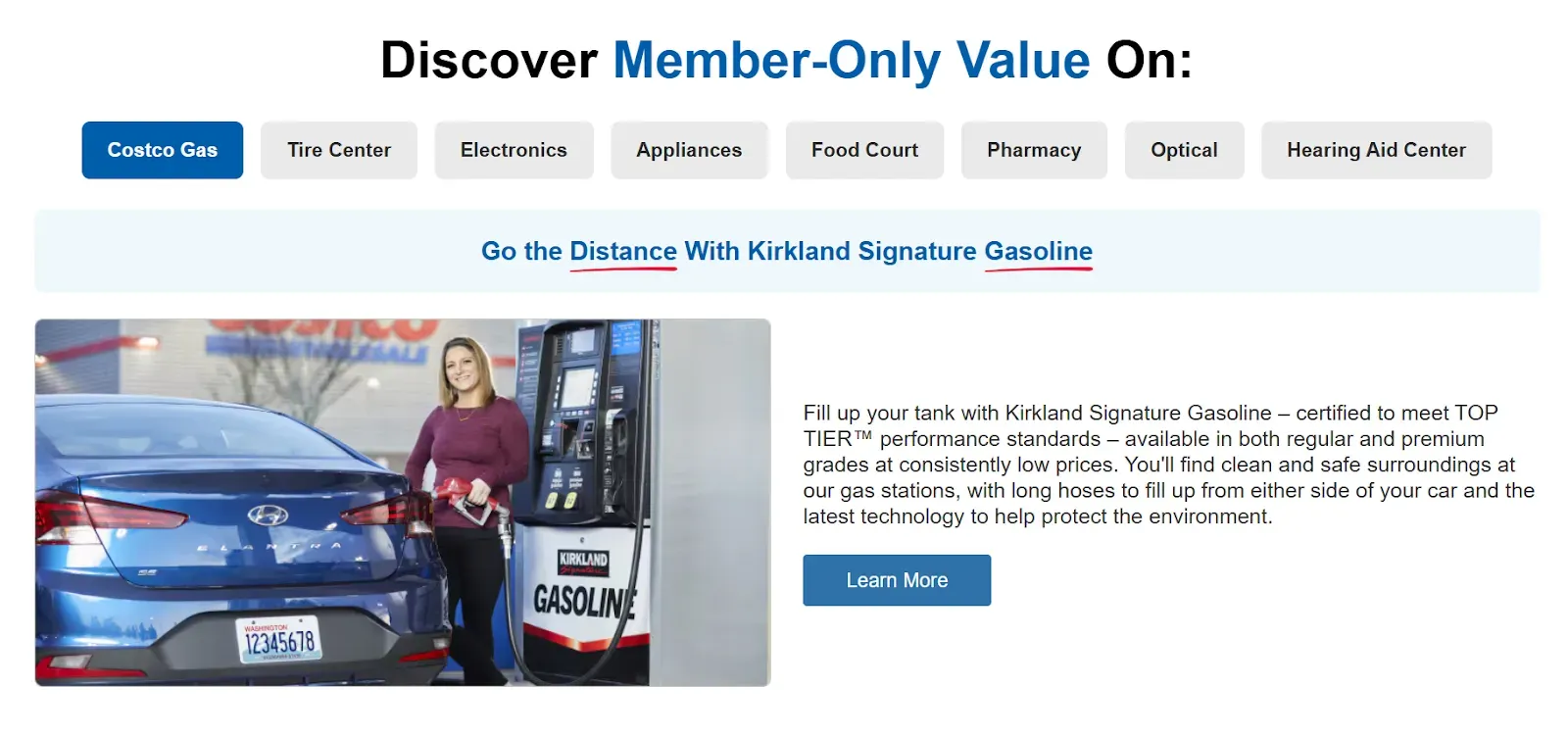
My H-E-B
H-E-B, a Texas-based grocery chain, offers its shoppers a My H-E-B reward system.
Customers can access exclusive deals through the My H-E-B mobile app by clipping and redeeming digital coupons for online and in-store use.
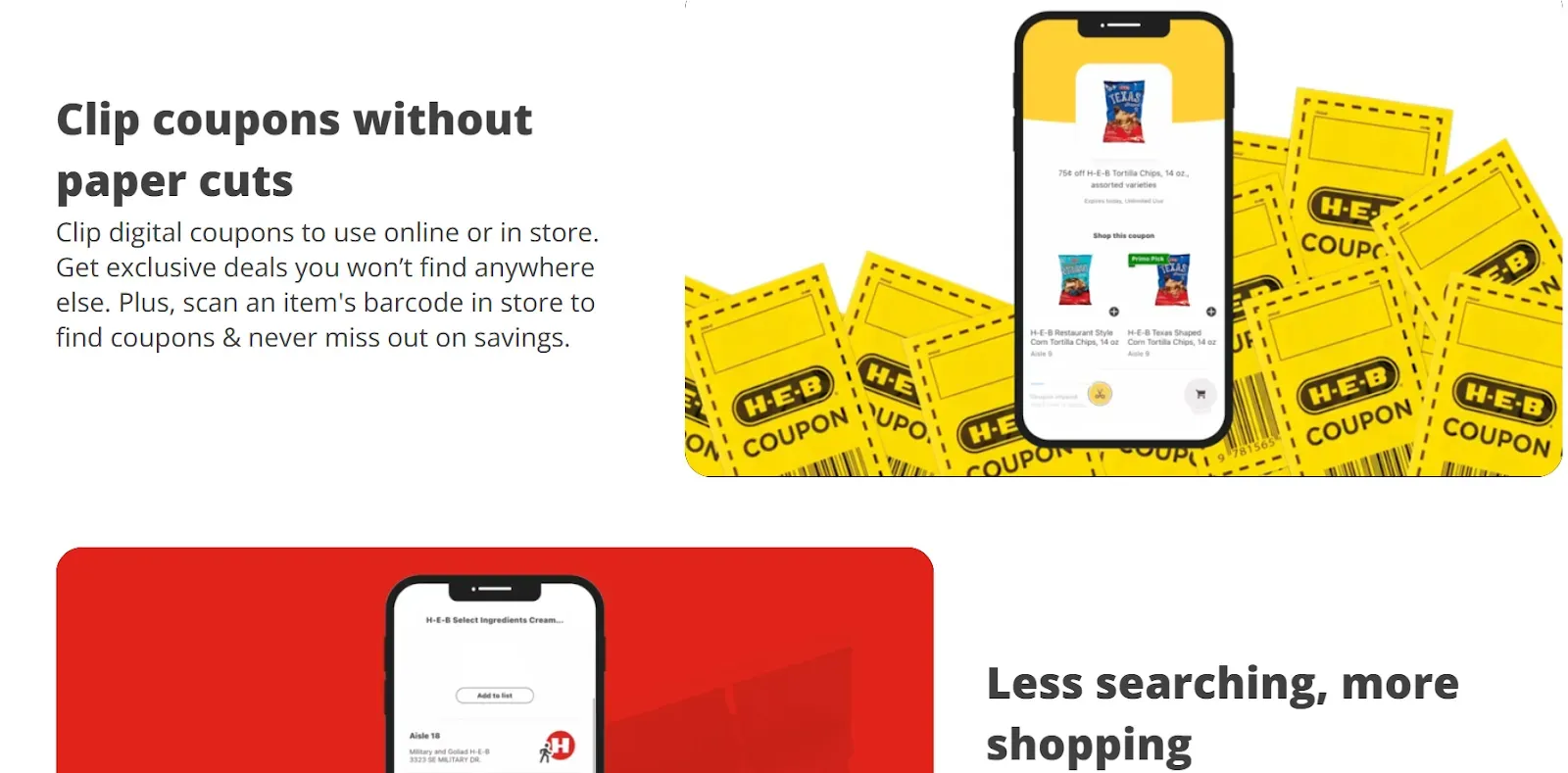
The HEB app allows customers to shop anytime for curbside pickup or delivery. It includes a barcode scanner, allowing users to quickly add items to their carts and find related coupons, ensuring they never miss out on savings. Customers also reorder from previous purchases, making grocery shopping more convenient and rewarding.
Sam's Club Membership
Like Costco, Sam's Club requires an annual membership fee, which grants access to bulk items and discounted prices. Sam’s grocery store loyalty program benefits are connected and easily accessed through the mobile app, physical card, and website.
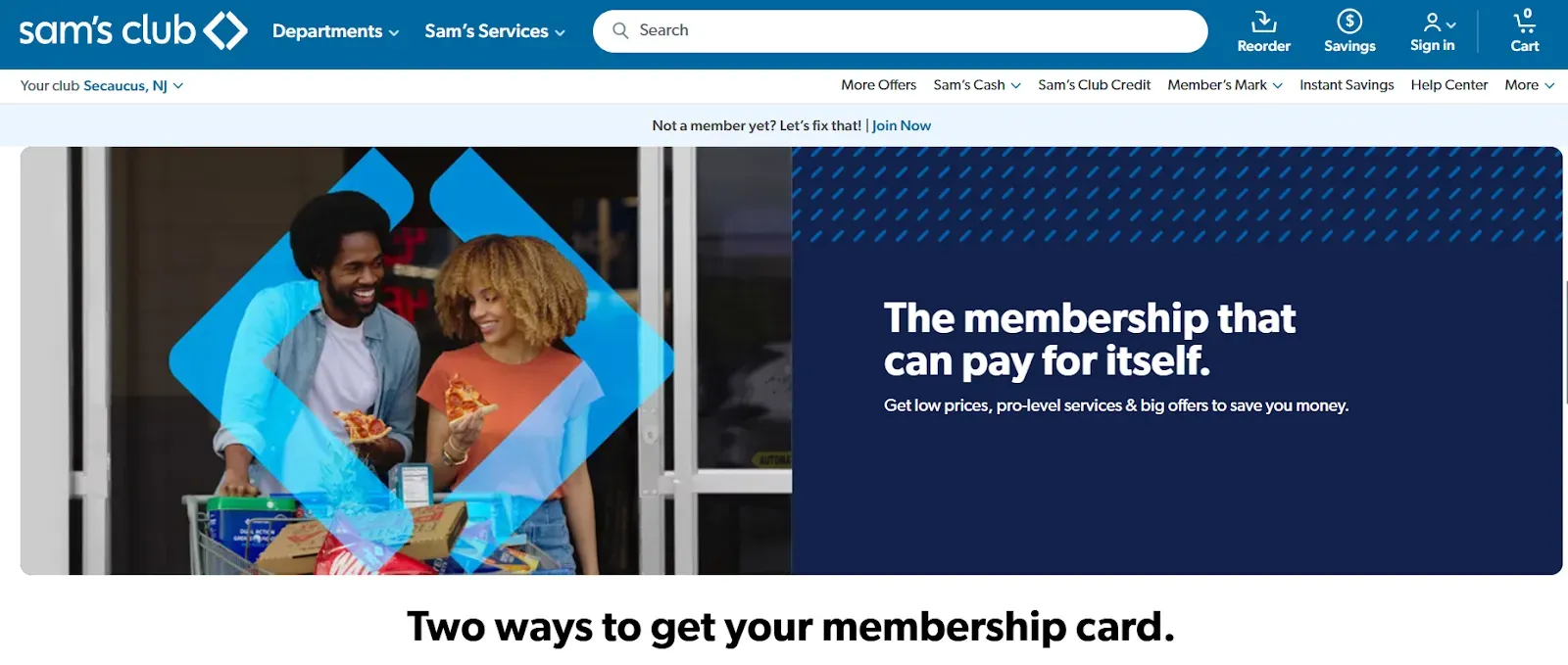
They offer two types of membership cards: a digital card that can be easily accessed via mobile phone and a physical card that can be obtained in the store.
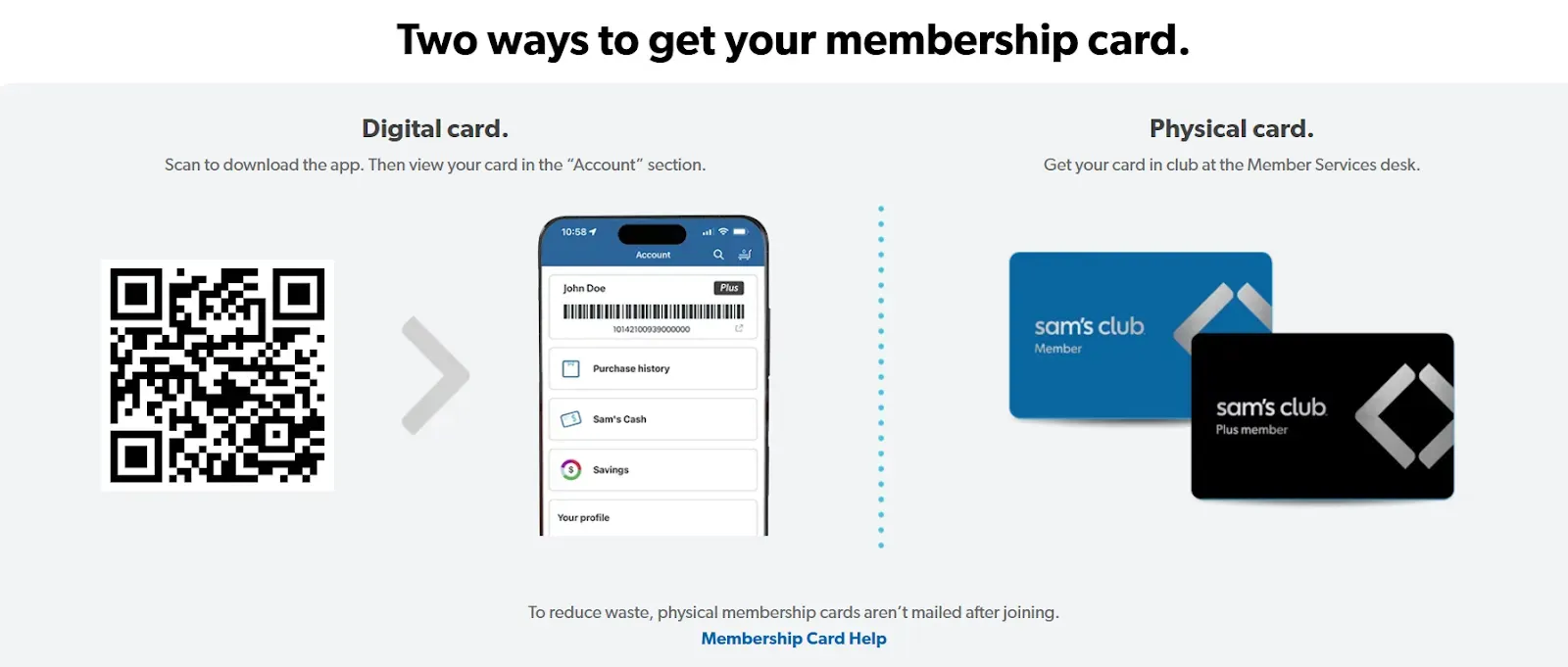
The Sam’s Club loyalty program offers two membership types: Plus and Club, which cost $110 and $50, respectively. The Plus membership provides additional benefits, such as free delivery and 2% cashback.
Kroger Plus Card and Kroger Boost
Kroger’s grocery loyalty program prioritizes customer savings and personalized shopping experiences. Kroger has two types of grocery loyalty programs.
First is the Kroger Plus Card, which customers sign up for at no cost. This card provides exclusive discounts on groceries and general merchandise.
Customer loyalty members earn 1 Fuel Point for every dollar spent. The points can be redeemed for discounts of up to $1 per gallon at Kroger Fuel Centers and participating stations.
The program also offers access to numerous digital coupons, allowing for additional savings tailored to individual shopping habits.
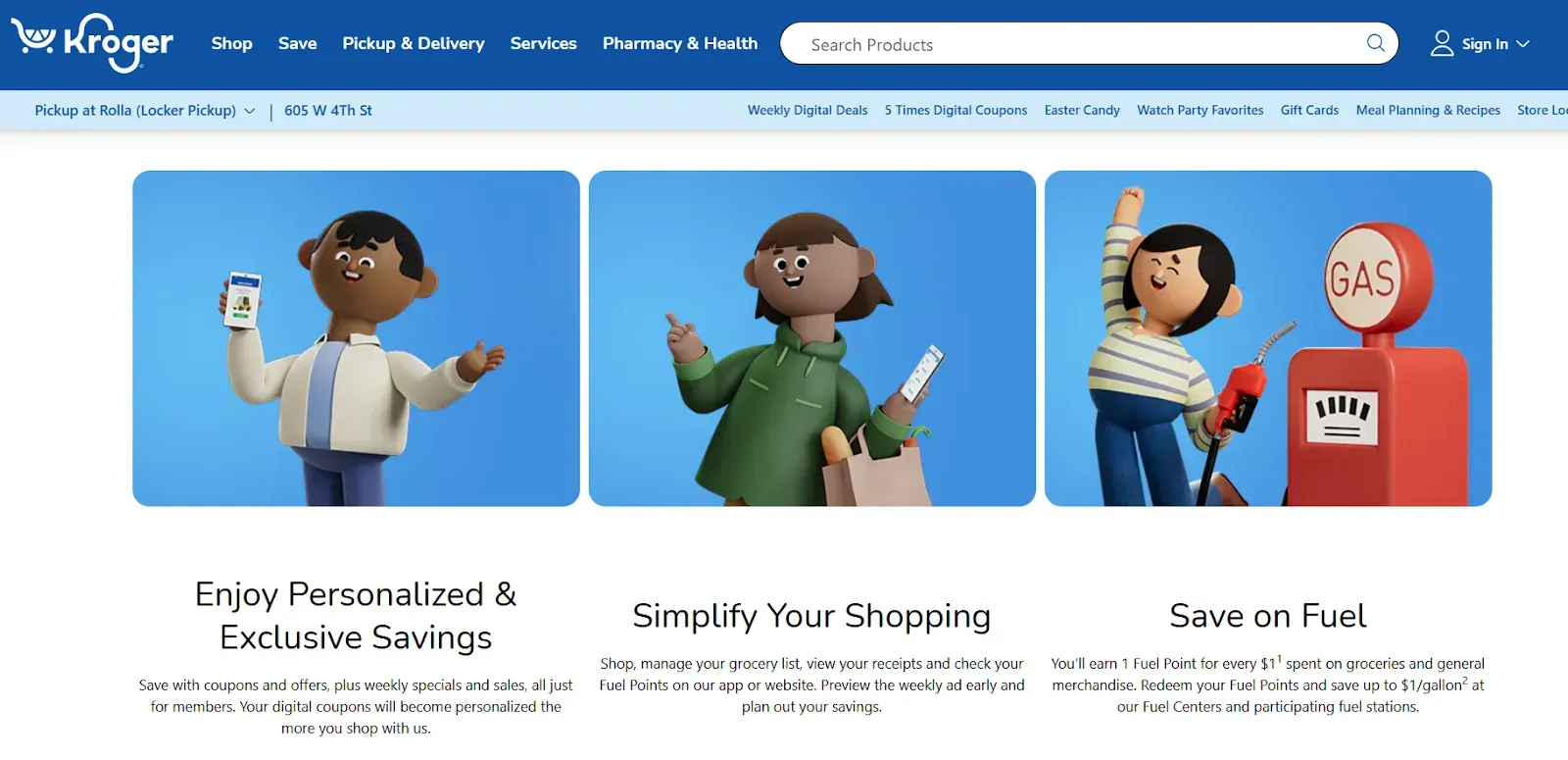
The second is the Kroger Boost membership, which offers two annual membership options: $59 and $99. Boost members receive 2X Fuel Points on purchases, enhancing their savings at the pump. Members also enjoy free delivery on grocery orders, with the delivery window varying depending on the chosen plan.
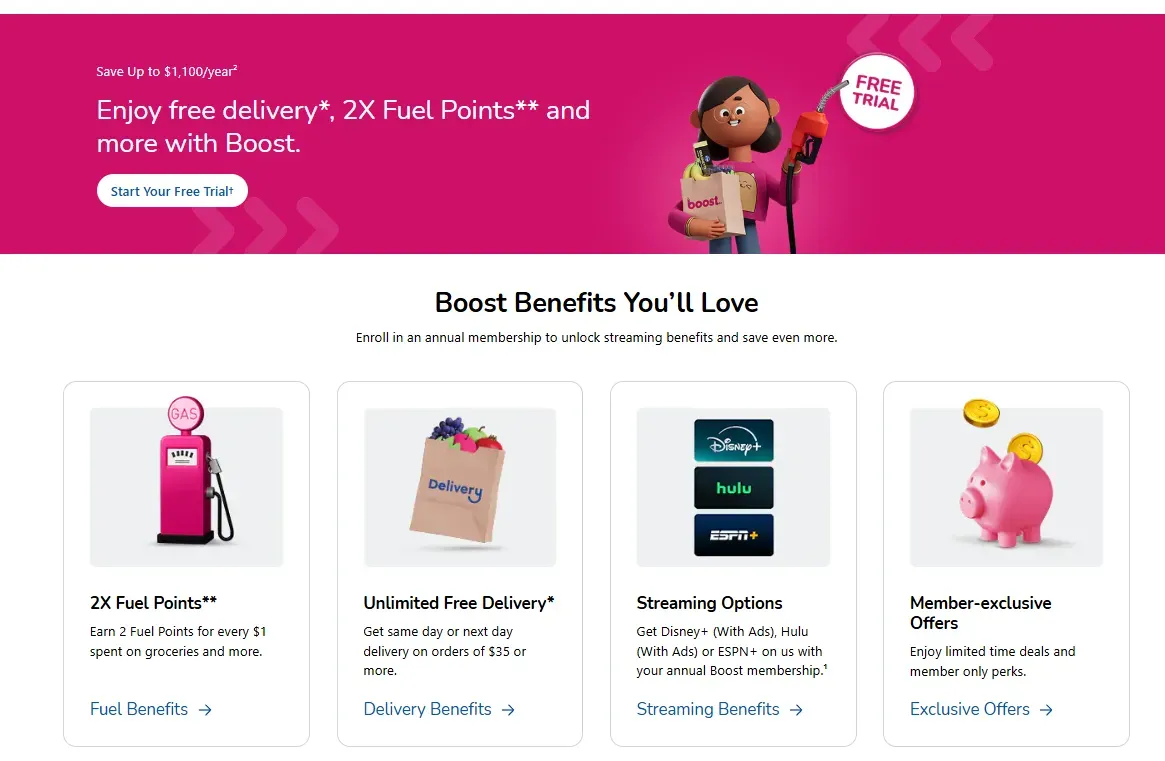
Walmart+
Walmart+ offers members free same-day delivery, free shipping on Walmart products (excluding oversized items), fuel discounts, and a complimentary Paramount+ membership.
The service costs $98 annually or $8.17 monthly, with discounted rates available for students and individuals on government assistance programs. They also offer a 30-day free trial to evaluate the offering and savings of the better.
BJ's Wholesale Club
BJ's Wholesale Club provides significant savings on groceries and other essentials. The $120 Club+ Card Membership includes up to 25% off on grocery store prices and offers same-day delivery, curbside pickup, and ExpressPay options through the mobile app.
Albertsons for U
Albertsons recently revamped its loyalty program to a point-based system. Customers now earn points over two months instead of one and convert them to cash at checkout.
Customers earn 1 Point for every $1 spent on groceries and use these points for up to two months. The point-based approach enhances customer engagement and provides more flexible redemption options for Albertsons’ customers.
Must-Have Features To Develop a Successful Grocery Store Loyalty Program
A well-designed supermarket and grocery store loyalty program drives repeat purchases, enhances customer engagement, and provides value to shoppers.
Below is the list of the must-have features to consider while developing your grocery store loyalty program:
Points and reward mechanics
Point-based reward systems remain a fundamental component of grocery loyalty programs.
In a point-based system, customers earn points based on their purchases, which they can redeem for discounts, free products, or exclusive offers. This approach encourages repeat visits as customers strive to accumulate points and unlock better rewards.
Retailers should choose an AI-driven loyalty management solution like Loyalife to manage their points and reward mechanics easily. This solution enables seamless points tracking and redemption, ensuring a hassle-free experience for customers and retailers.
Checkout coupons and instant discounts
Offering instant rewards at checkout, such as coupons or immediate discounts, reinforces customer satisfaction and increases their likelihood of returning.
Add gamification to grocery loyalty programs such as limited-time challenges, bonus points on buying groceries over a certain dollar amount, and exclusive early access to Thanksgiving or Christmas sales to drive shopper engagement.
These real-time incentives provide instant gratification, making customers feel valued and appreciated.
Personalized offers and AI-driven recommendations
Customers demand personalized experiences, even from their favorite grocery store. A one-size-fits-all approach no longer works. They seek tailored incentives based on past purchases and preferences.
Supermarkets leverage AI-powered analytics to provide personalized discounts and product recommendations based on individual shopping habits. Tesco Clubcard leverages AI-driven insights to send hyper-personalized coupons to members, increasing engagement.
By tailoring rewards to each shopper’s preferences, retailers enhance customer experience and drive loyalty.
Loyalife’s AI-driven insights will help businesses analyze customer purchase data and deliver targeted promotions that fit with their customers.
Exclusive partner collaborations
Partnering with other businesses extends the value of a loyalty program. Supermarkets should collaborate with local restaurants, gas stations, and online retailers to give customers diverse rewards, such as fuel discounts or dining offers.
Whole Foods offers exclusive discounts to Amazon Prime members, rewarding loyalty through added value rather than just price cuts.
Several grocery chains offer fuel rewards. Customers earn points on grocery purchases that can be redeemed for fuel discounts.
Tiered Membership Levels
Introducing a tiered loyalty system adds an element of exclusivity and motivation. A tiered system creates aspirational value for shoppers, encouraging them to reach the next level for better rewards.
This enables customers to spend more and engage more frequently with your grocery loyalty program. Customers who spend more unlock premium membership tiers with enhanced benefits, such as higher discount rates, early access to promotions, or VIP shopping events.
For instance, offer VIP perks and an extra 5% discount to loyalty members on the premier tier compared to the ones on the basic tier.
A pro tip is to opt for a loyalty management solution that analyzes member demographics, engagement, and tier progressions, helping grocers develop strategic campaigns.
Digital Integration and Mobile App Accessibility
An ideal grocery loyalty program will work in-store, on an online website, and a mobile application. Customers earn and redeem loyalty points regardless of where they shop.
A mobile app gives the customer the convenience of tracking points in real-time and brands an avenue to share coupons, push notifications, and deals.
A well-designed mobile app should allow customers to:
- Track points and rewards
- Access personalized promotions
- Scan barcodes for digital coupons
- Redeem rewards effortlessly
Some grocery stores also send updates regarding points balance, deals, and sales via WhatsApp and text messages.
Loyalife’s omnichannel platform ensures customers enjoy a seamless loyalty experience across mobile, web, and in-store interactions.
Albertsons’ “for U” program integrates personalized deals, a mobile app, and fuel rewards across multiple locations.
Offering paid subscriptions
Grocers are also leveraging subscription-based loyalty programs such as Krogers Boost. Customers are willing to pay for premium grocery loyalty programs that offer convenience and extra perks.
For a monthly or yearly subscription, grocery loyalty programs offer free delivery, discounts on every order, and priority perks such as express checkouts or higher-tier rewards.
Some grocers bring in new shoppers with a free membership and later use paid options for enhanced loyalty benefits.
Charity and sustainability initiatives
Today, consumers value businesses that align with their social and environmental values. Loyalty programs encouraging eco-conscious shopping behaviors are gaining popularity as modern consumers value sustainability and green initiatives.
Loyalty programs reward eco-friendly choices, such as bringing reusable bags or buying organic, local, or sustainably sourced products.
Additionally, programs include donation options, where customers contribute points to charitable causes. Target’s Circle program lets customers earn cash back and donate some of their earnings to local nonprofits.
Limited-time promotions and exclusive events
Creating urgency through time-sensitive promotions and exclusive events for loyalty members significantly boosts engagement.
Limited-time sales, special shopping hours, or exclusive product launches incentivize customers to participate actively in the program.
Upcoming Trends in Grocery Loyalty Programs
The landscape of grocery loyalty programs is evolving rapidly, with several key trends emerging in 2025 that retailers will consider to enhance customer engagement and retention:
Listing down below some of the trends that will shape the grocery store loyalty programs in 2025:
- Retailers' real-time data will help them create "marketing at the moment," offering deals based on factors like time of day, weather, or shopping habits.
- With third-party cookies being phased out, grocery loyalty programs are becoming critical for collecting direct customer data ethically.
- Programs are moving beyond point systems to create comprehensive ecosystems with experiential rewards (e.g., cooking classes) or metaverse integration.
- Collaborations between grocery retailers and financial institutions are creating more rewarding loyalty experiences.
Wrapping Up
As grocery shopping habits shift and change, loyalty programs must adapt to meet evolving consumer expectations. Successful grocery loyalty programs blend personalization, omnichannel accessibility, exclusive perks, and sustainability initiatives to create a compelling customer experience.
Supermarkets build loyalty programs that retain existing customers and attract new ones by implementing AI-driven insights, offering flexible reward structures, and integrating subscription-based benefits.
With Loyalife, design and manage loyalty programs that drive engagement, increase customer spending, and foster lasting relationships. Book your demo now!


